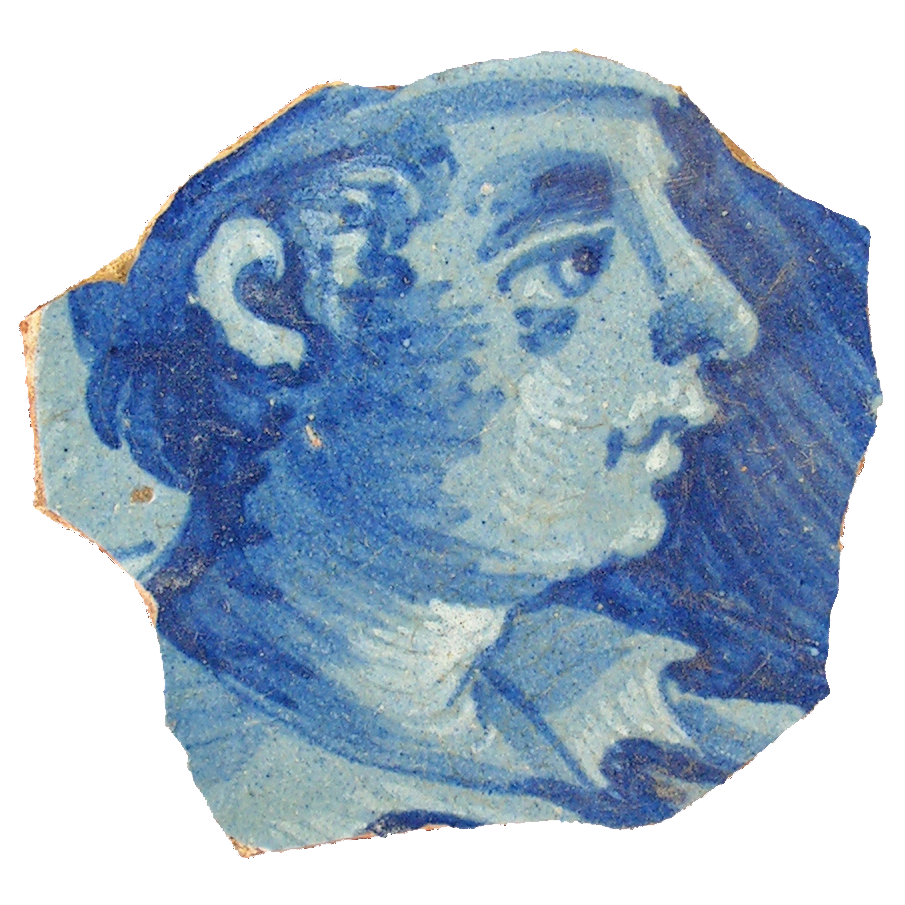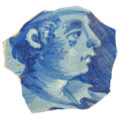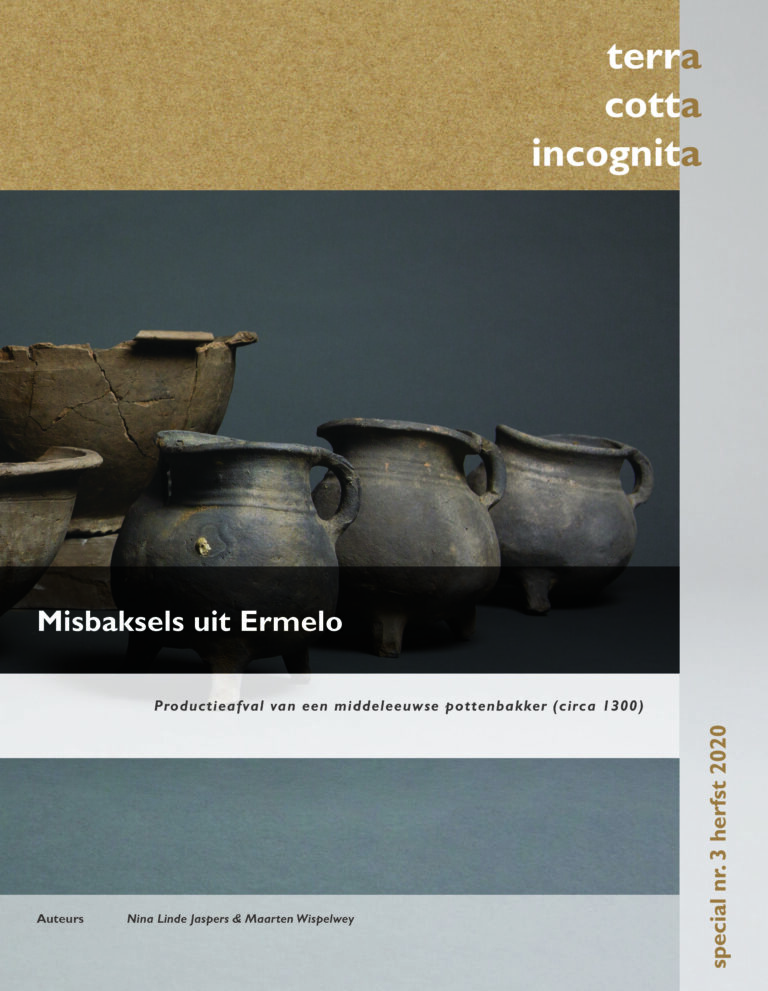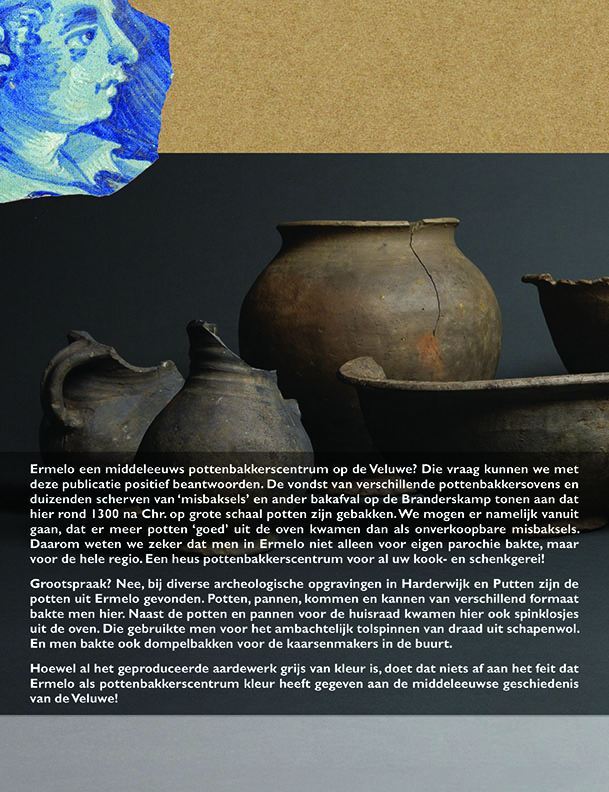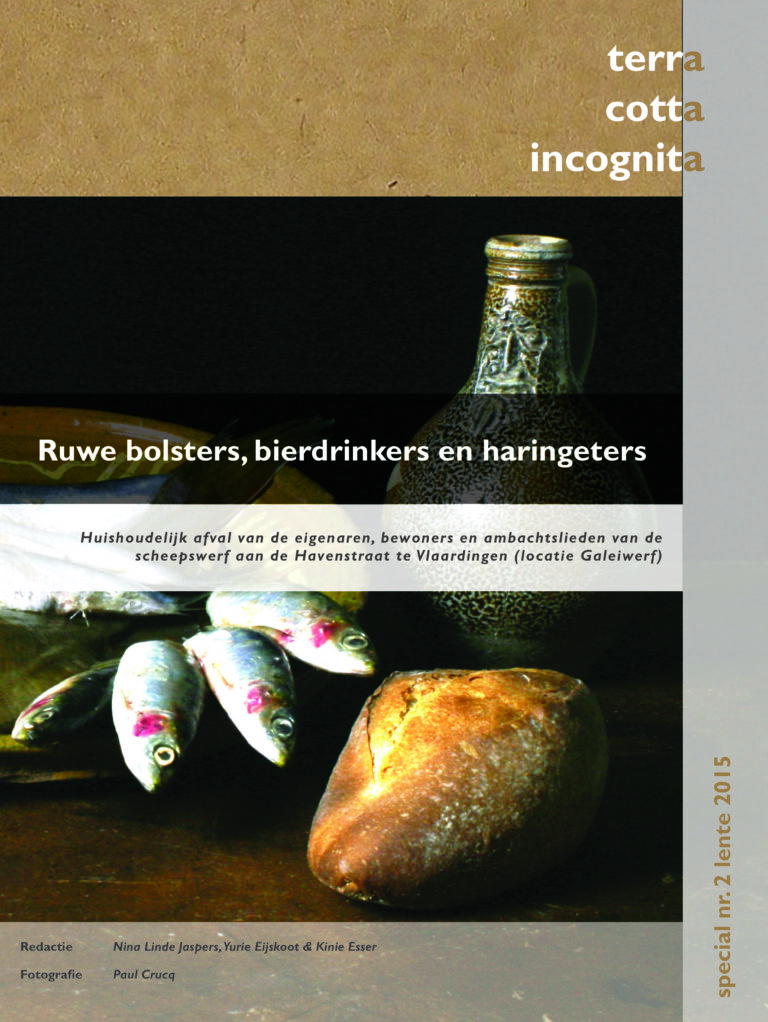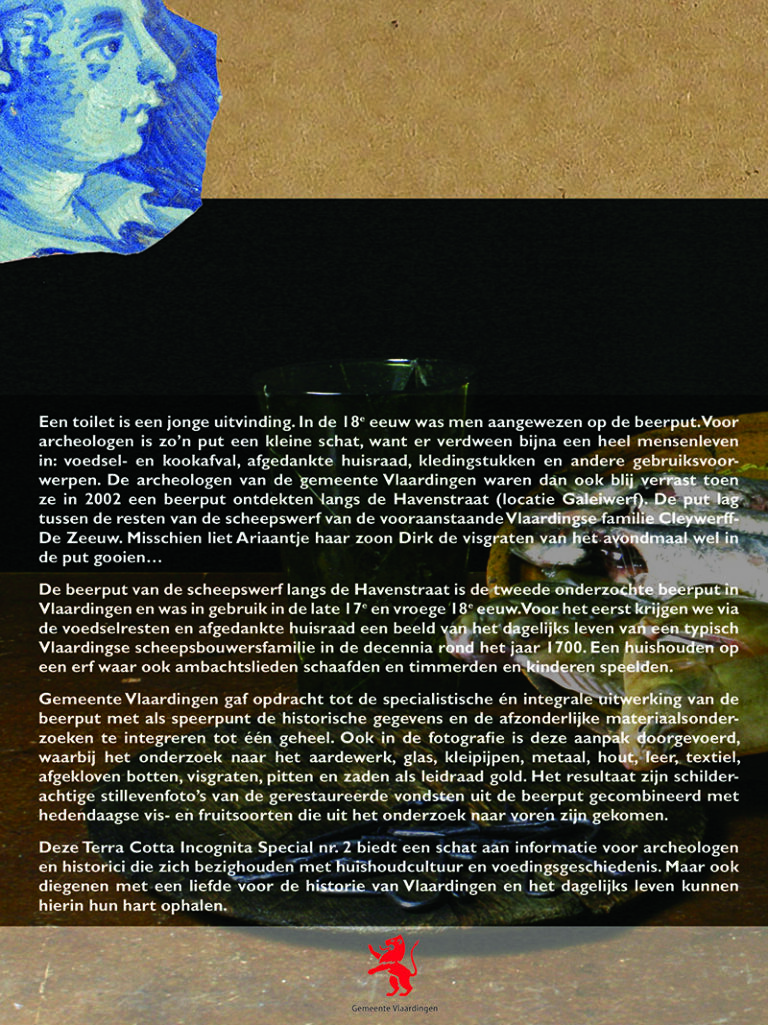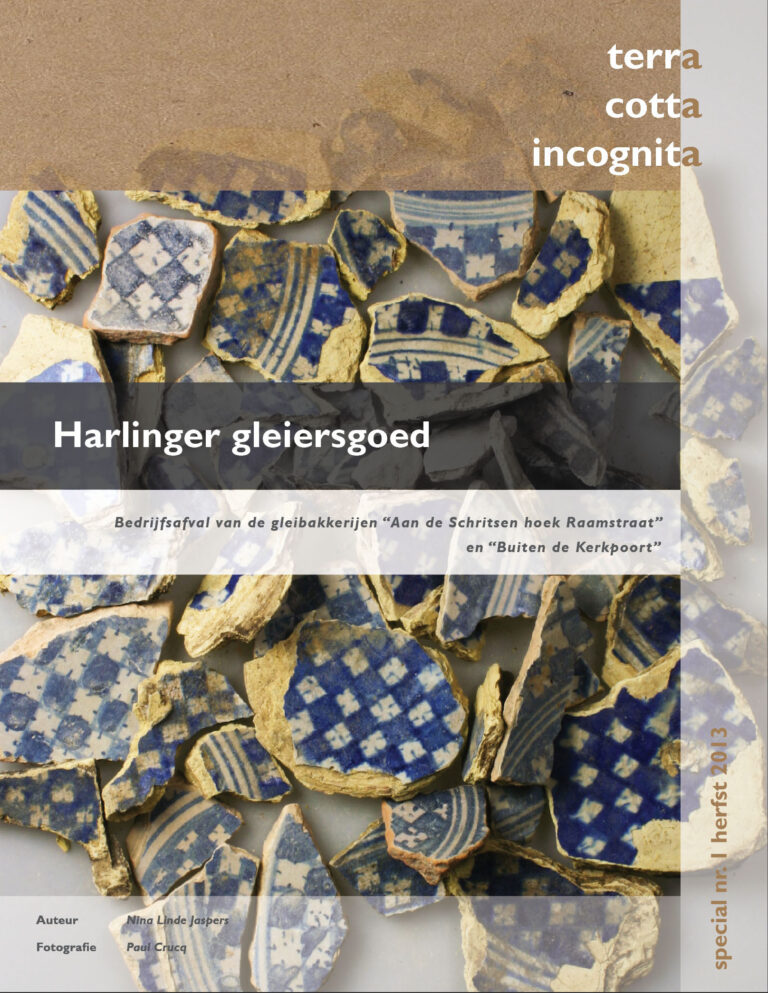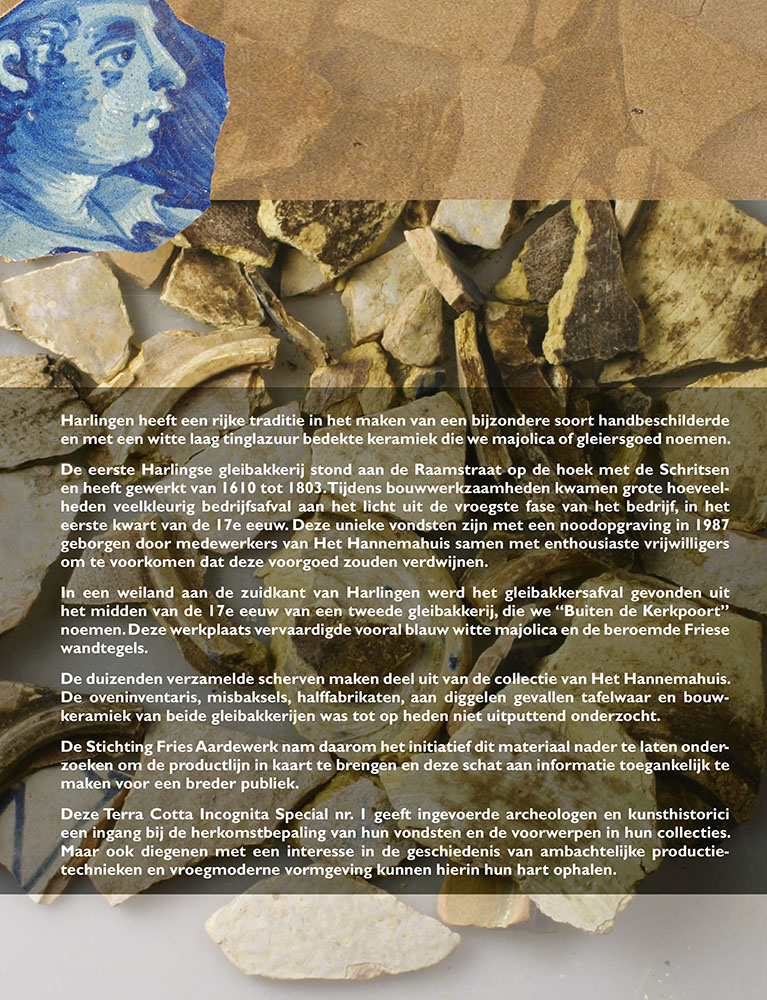Our specials
the specials
terra cotta incognita specials is a series of archaeological reports written by material culture specialists, with the finds in the spotlight to show all their detail. The series is well designed and richly illustrated with high quality photography, while maintaining the scientific standard for specialists in the field. This makes it attractive for a wider audience and for archaeological specialists alike. The specials’ subjects are cherry-picked: they really need to be something special, with high relevance to specialists in the working field.
special nr. 3 Misbaksels uit Ermelo. Productieafval van een middeleeuwse pottenbakker
Author: Nina Linde Jaspers & Maarten Wispelwey
Photography: Pieter Crucq
Illustrations: Heleen van der Hoogt & Jelle Nijman
Archaeometry: Simone Casale
Year of publication: 2020
Co-production: Terra Cotta Incognita | Archeologie Noord-Veluwe | Gemeente Ermelo
Ermelo a medieval pottery centre on the Veluwe? With this publication, we can give a positive answer to that question. The discovery of several potter’s kilns and thousands of shards of ‘misfired’ objects and other pottery production waste at the Branderskamp area, proves that pots were fired here on a large scale around 1300 AD. We may assume that more pots came out of the kiln ‘in good order’ than as unsalable misfired examples. Therefore, we know for sure that people in Ermelo did not only produce pottery for their own parish, but for the entire region. A true pottery centre for all your cooking and pouring utensils!
Bragging? No, the pots from Ermelo were found during various archaeological excavations in Harderwijk and Putten. Pots, pans, bowls and jugs of various sizes were made here. In addition to pots and pans for domestic use, spindles were also produced here. They were used for the traditional spinning of thread from sheep’s wool. And they also made dipping pots for the candle makers in the neighbourhood.
Although all the pottery produced here is grey, this does not detract from the fact that Ermelo, as a pottery centre, has given colour to the medieval history of the Veluwe!
In Dutch; full colour, richly illustrated, Deventer system catalogue, 64 pp.
In stock: €12,95 plus shipping costs.
special nr. 3 is available for order at the webshop of the Riemer & Walinga Book Shop in Ermelo.
special nr. 2 Ruwe bolsters, bierdrinkers en haringeters. Huishoudelijk afval van de eigenaren, bewoners en ambachtslieden van de scheepswerf aan de Havenstraat te Vlaardingen (locatie Galeiwerf)
Authors: Nina Linde Jaspers, Yurie Eijskoot & Kinie Esser
Still life photography: Paul Crucq
Year of publication: 2015
Co-production: Terra Cotta Incognita/ Vlaardings Archeologisch Kantoor/ Archeoplan Eco
This publication contains the results of the research on a cesspit of around 1700 on a shipyard alongside the Havenstraat (Harbourstreet) in Vlaardingen, the Netherlands. This richly illustrated special offers a treasure of information for archaeologists and historians that work on home culture and food history. But also those with a love for old ceramics and glass, the history of Vlaardingen and daily life can indulge in this.
Treasures from the cesspit
A toilet is a recent invention. In the 18th century one had to rely on the cesspit. For archaeologists such a pit is a little treasure, because it holds nearly all remnants of human daily life. The archaeologists discovered a cesspit in between the remnants of the shipyard of family Cleywerff-De Zeeuw. For the first time we obtain by the food scraps and discarded household items a picture of daily life of a typical shipbuilder family from Vlaardingen in the decades around the year 1700.
Still lifes
In the Special one finds a broad specialist elaboration of the finds from the cesspit aiming to integrate the historical data and the various material categories into one story. This approach was applied as well in the innovative photography where the study of the pottery, glass, clay pipes, metal, wood, leather, textiles, gnawed bones, fish bones, nuts and seeds was set as a guide. The result consists of Paul Crucq’s († 2014) wonderful picturesque still life pictures of restored finds from the cesspit combined with contemporary fish and fruit which have been recognized during the archaeobotanical and archaeozoological research.
In Dutch; full colour, richly illustrated, Deventer System catalogue, 200 pp.
Sold out.
special nr. 2 is sold out, but has been made accessible online.
special nr. 1 Harlinger gleiersgoed. Bedrijfsafval van de gleibakkerijen “Aan de Schritsen hoek Raamstraat”
en “Buiten de Kerkpoort”
Author: Nina Linde Jaspers
Editors: Pieter Jan Tichelaar & Hugo ter Avest
Photography: Paul Crucq
Year of publication: 2013
Co-production: Terra Cotta Incognita | Stichting Fries Aardewerk | Gemeentemuseum Het Hannemahuis
Harlingen has a rich tradition in the production of a special type of hand-painted ceramics covered with a white layer of tin glaze, which we call majolica or ‘gleiersgoed’.
The first Harlingen majolica workshop was located on the Raamstraat on the corner with the Schritsen and operated from 1610 until 1803. During construction work, large quantities of multicoloured production waste came to light from the earliest phase of the majolica workshop, in the first quarter of the 17th century. These unique finds were salvaged in an emergency excavation in 1987 by employees of the Hannemahuis together with enthusiastic volunteers to prevent them from disappearing forever.
In a meadow on the south side of Harlingen, production waste of a second majolica workshop called “Buiten de Kerkpoort” was found, dating from the middle of the 17th century. This workshop mainly produced blue and white majolica and the famous Frisian wall tiles.
The thousands of collected shards are part of the collection of the municipal museum the Hannemahuis. The kiln inventory, misfires, semi-finished products, shattered tableware and building ceramics of both majolica workshops had not been examined exhaustively up until now. Therefore, the Stichting Fries Aardewerk took the initiative to have this material investigated and map the product line and make this treasure trove of information accessible to a wider public.
This Terra Cotta Incognita Special nr. 1 gives imported archaeologists and art historians an entry point in determining the provenance of their finds and the objects in their collections. But also those with an interest in the history of handicraft production techniques and early modern design can find their heart’s content here.
In Dutch; full colour, richly illustrated, Deventer System catalogue, 82 pp.
Sold out.
special nr. 1 is sold out, but has been made accessible online.
for a wider horizon
For a wider audience we coordinate, co-write, design, edit, produce and publish popular books on regional archaeology. Like the specials the books are well designed and richly illustrated with high quality still life photography and illustrations of historical reconstructions based on archaeological research. Instead of diving into the depth of the details with the specials, these popular books search for a wider horizon. They summarize large amounts of archaeological research that have been published in numerous archaeological reports and present the most important outcomes to a larger public.
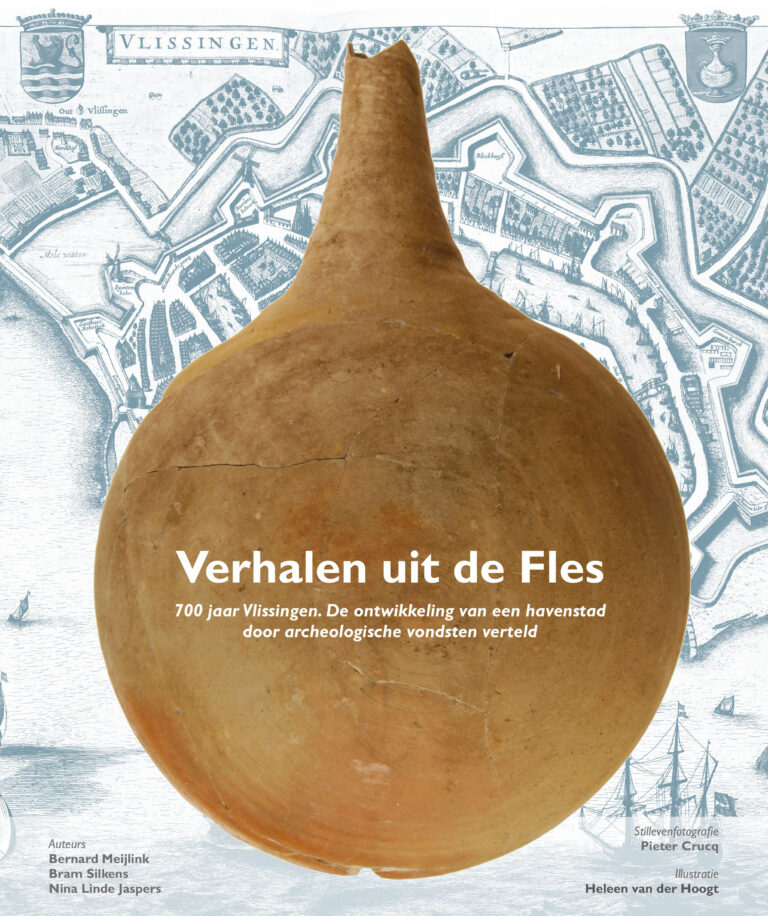
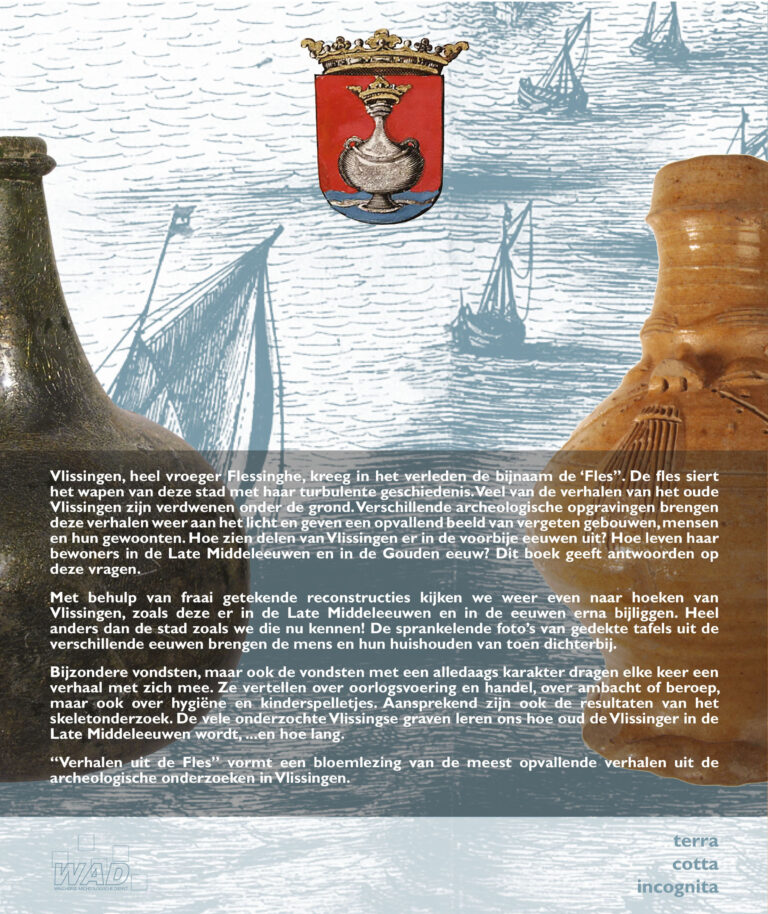
Verhalen uit de Fles. 700 jaar Vlissingen. De ontwikkeling van een havenstad door archeologische vondsten verteld.
Authors: Bernard Meijlink, Bram Silkens & Nina Linde Jaspers
Still life photography: Pieter Crucq
Illustrations: Heleen van der Hoogt
Year of publication: 2015
Co-production: Terra Cotta Incognita/ Walcherse Archeologische Dienst
The city of Flushing, a long time ago known as ‘Flessinghe’, got the nickname ‘The Flask’. The coat of arms of this city with a very turbulent history shows a flask already for centuries. Many of the stories of the old Flushing have dissappeared undergrond. Different archaeological excavations have brought these stories to light and show a picture of forgotten buildings, people and their habits. What did parts of Flushing look like in the centuries gone by? How did her citizens live in the Late Middle Ages and the Golden 17th Century? This book answers these questions.
Through beautifully illustrated historical reconstructions we look at corners of Flushing as they were in the late middle ages and the centuries afterwards. Very different from the city we know nowadays. The sparkling photographs of set tables from different centuries bring the past individuals and their households up close. Special finds, but also finds with a more common character are carrying a story with them every time. They tell us about warfare and international trade, crafts and profession, but also about hygiene and children’s games.
Appealing are also the results of the skeletal research. The large number of researched graves from Flushing teach us how old the average person from Flushing grew, and how tall. Verhalen uit de Fles / Stories from the Flask contains an anthology of the most remarkable stories from the archaeological researches in Flushing.
In Dutch; full colour, richly illustrated, 96 pp.
In stock: €16,- plus shipping costs.
Verhalen uit de Fles is still in stock. For order, please leave a message in the contact form.
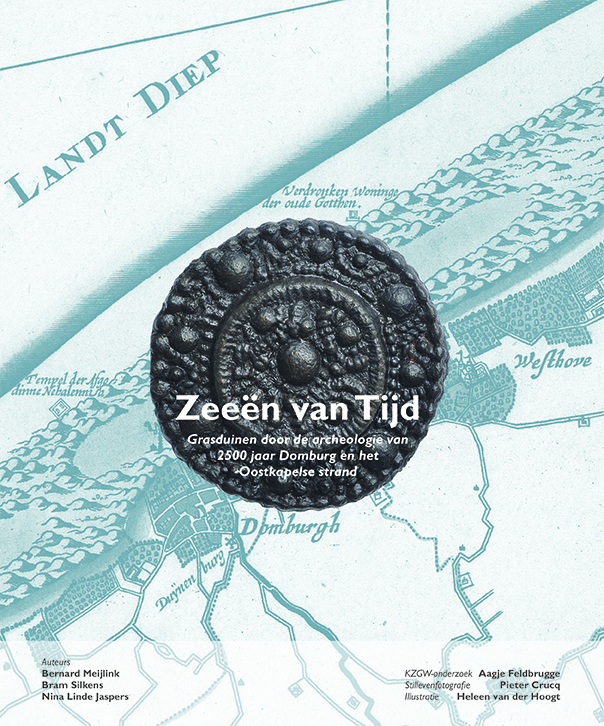
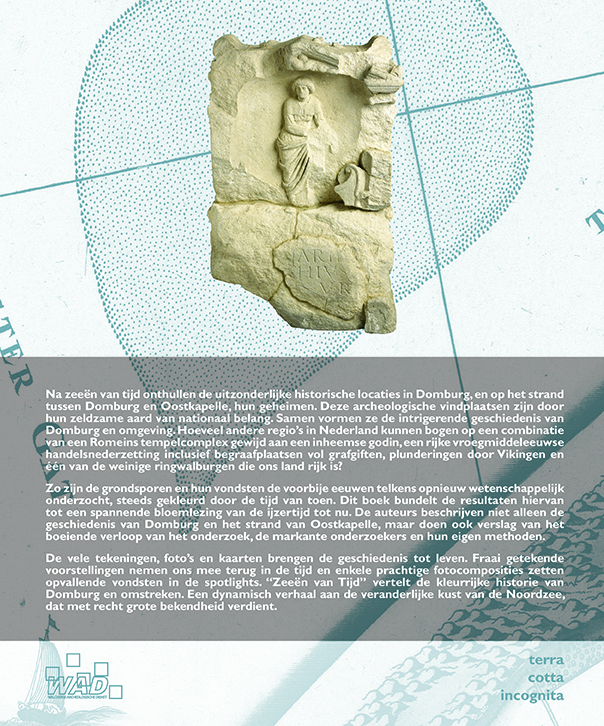
Zeeën van Tijd. Grasduinen door de archeologie van 2500 jaar Domburg en het Oostkapelse strand.
Authors: Bernard Meijlink, Bram Silkens & Nina Linde Jaspers
Still life photography: Pieter Crucq
Illustrations: Heleen van der Hoogt
Archival research: Aagje Feldbrugge
Year of publication: 2017
Co-production: Terra Cotta Incognita/ Walcherse Archeologische Dienst
After seas of time the exceptional historical locations in Domburg – and on the beach between Domburg an Oostkapelle – reveal their secrets. Because of their rare nature, these archaeological sites are of national importance. Together they form the intriguing history of Domburg and surroundings. How many other regions in the Netherlands hold the combination of a Roman temple dedicated to a local goddess, a rich early medieval trade settlement, graves with gifts included, pillagings by the Vikings and one of the few ‘ringwalburgen’ in the Netherlands?
The features and their finds have been scientifically investigated over the last centuries, each time in their own fashion of the day. This book collects those results to an anthology of the Iron Age until now. The authors do not only describe the history of Domburg and the beach of Oostkapelle, but also report and illustrate the developments of the research, the fascinating researchers and their methods.
The many drawings, photographs and historical maps bring the history to life. Beautifully drawn artist impressions take us back in time and some fine photographic compositions put the most striking finds in the spotlights. Zeeën van Tijd / Seas of Time tells the colorful history of Domburg and surroundings. A dynamic story on the everchanging shores of the North Sea that deserves greater fame.
In Dutch; full colour, richly illustrated, 64 pp.
Second revised edition available for order at De Drvkkery.
